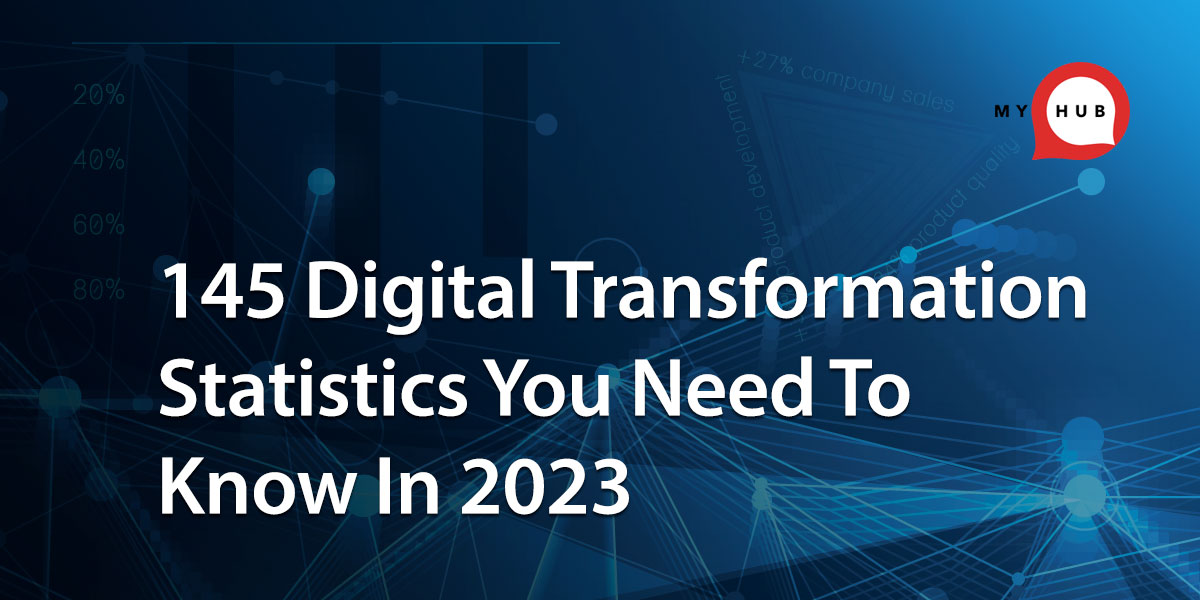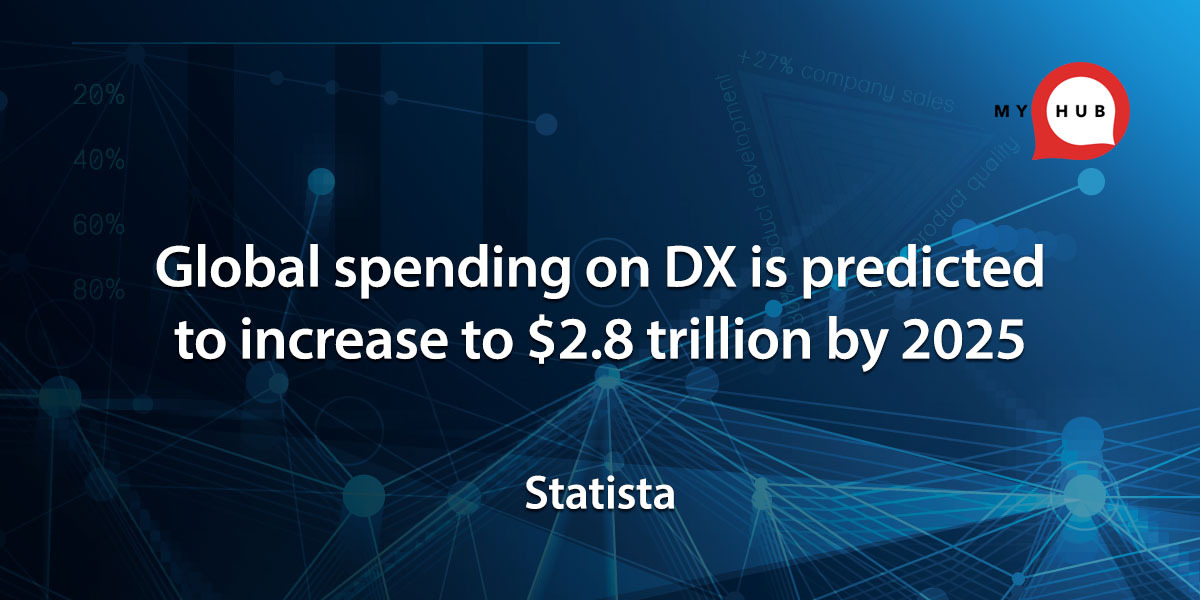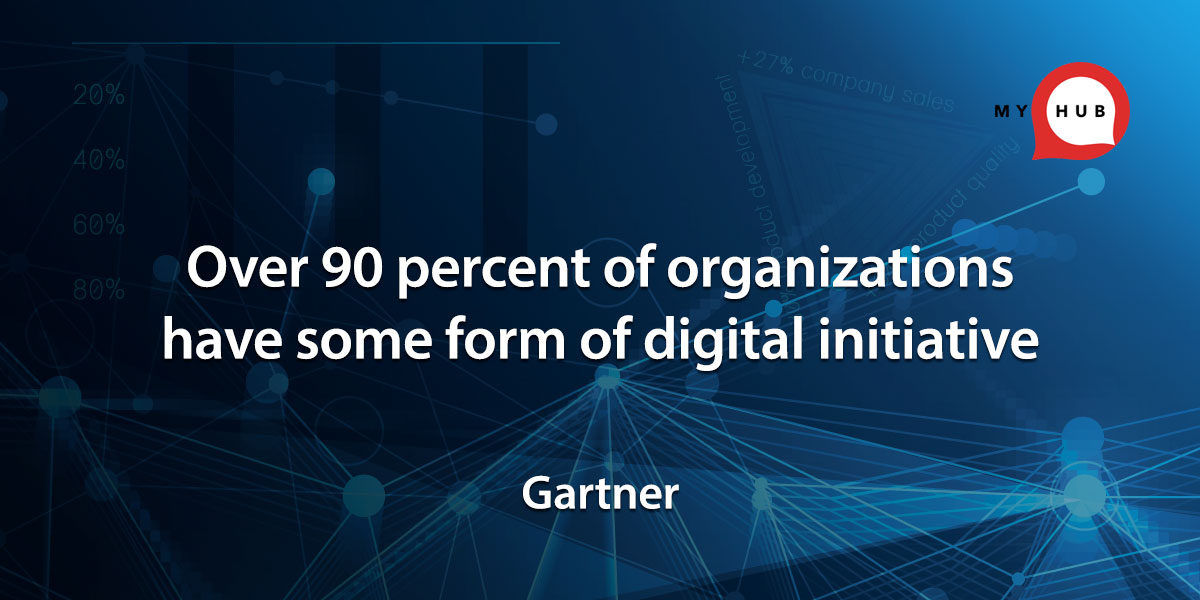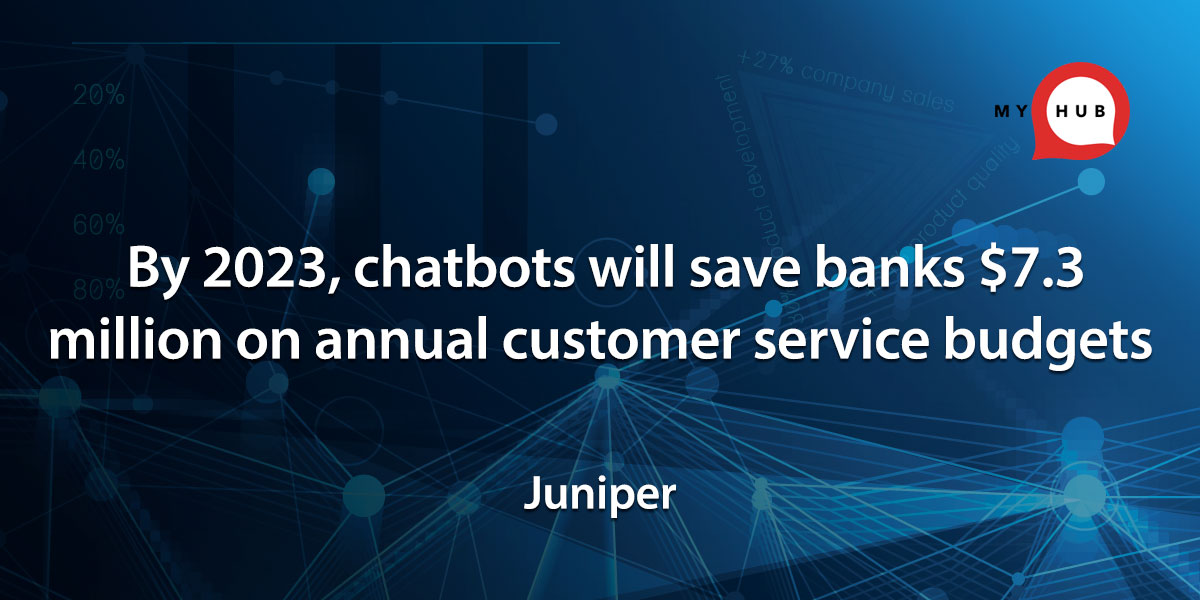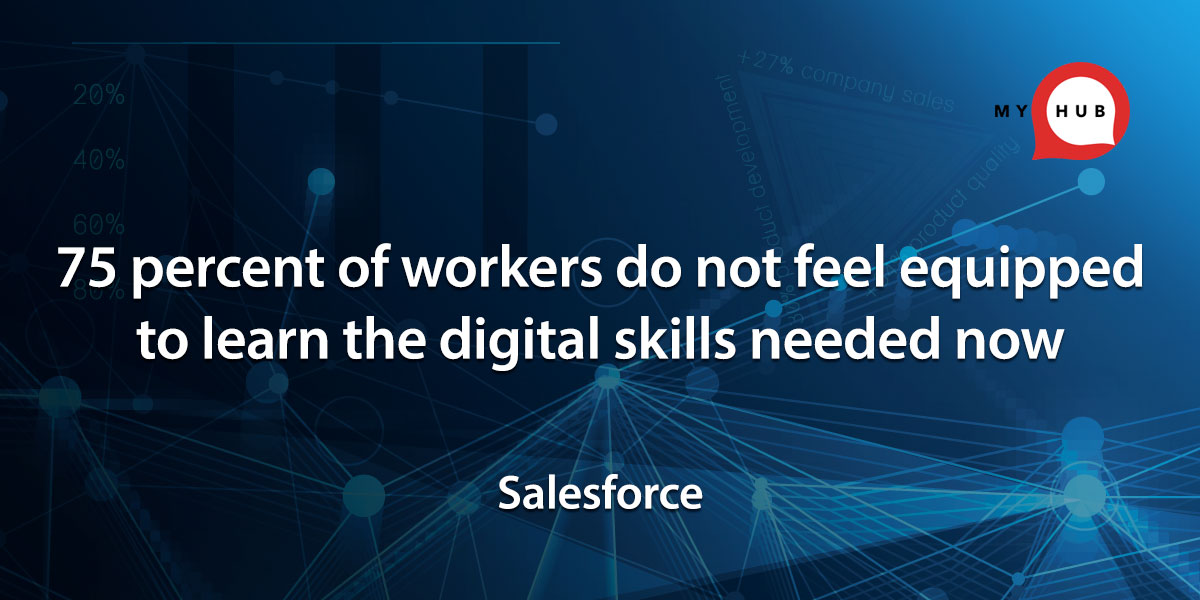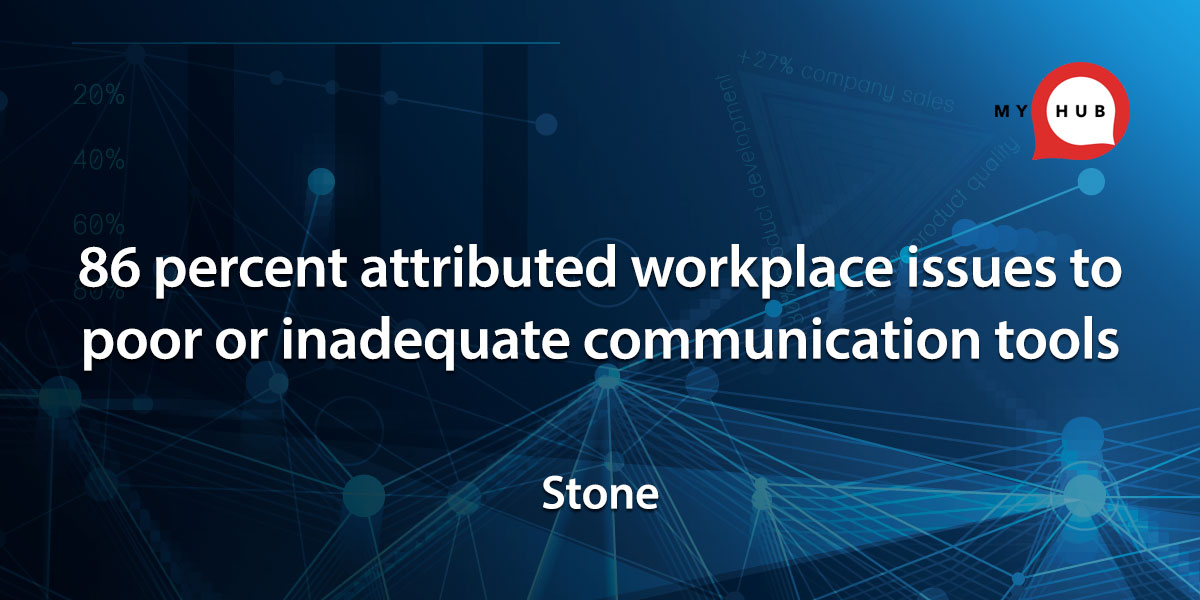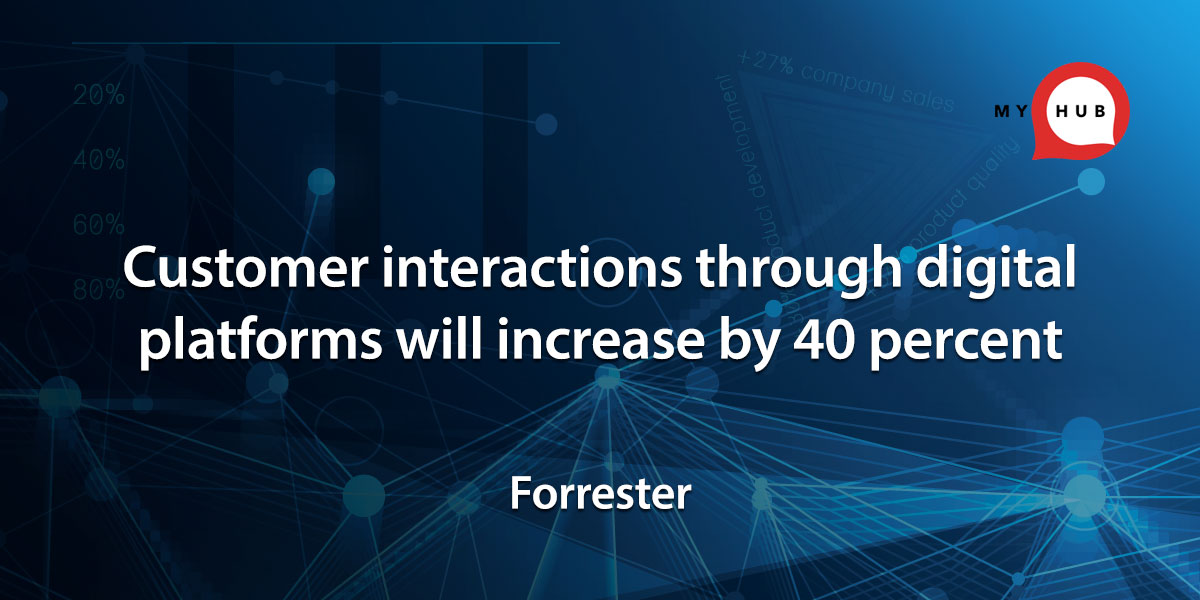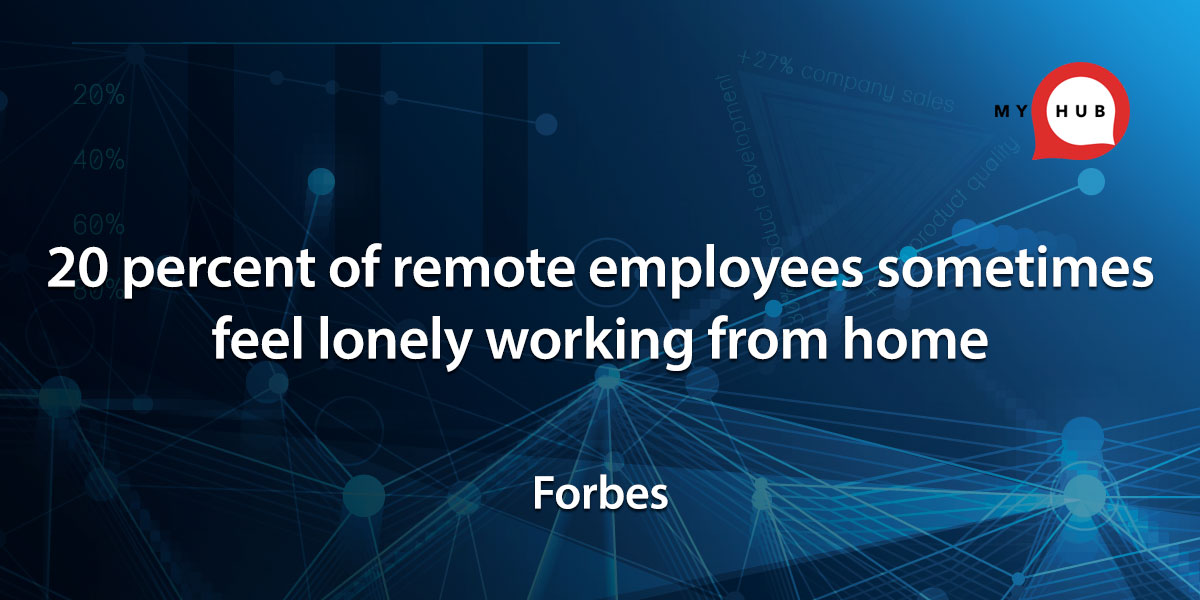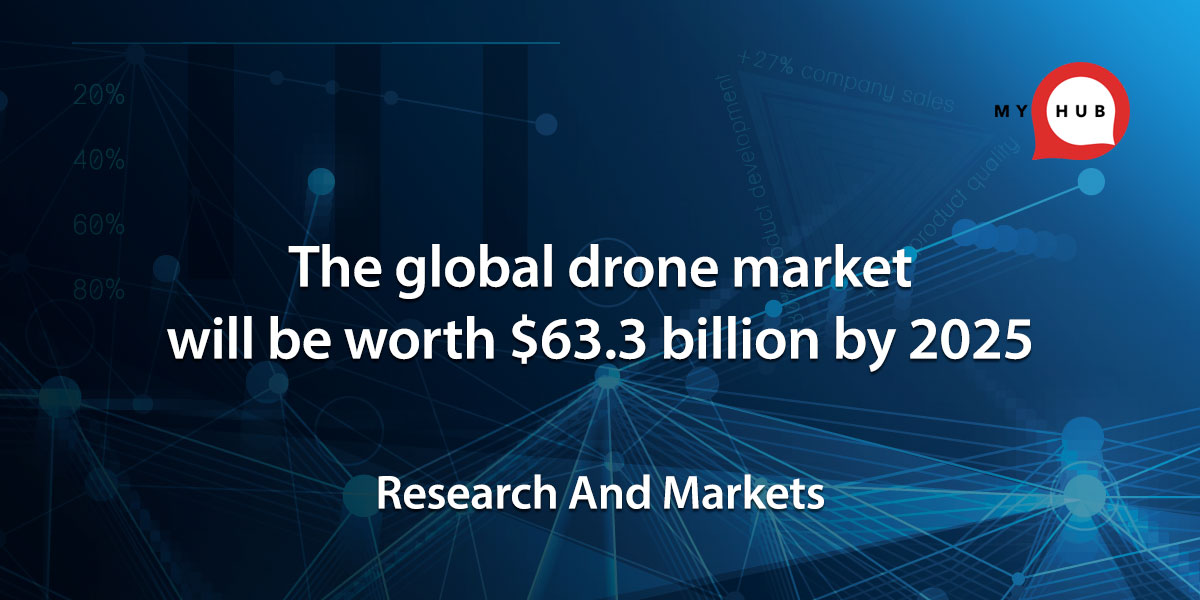‘Digitize to survive’ is a mantra often heard since Covid closed workplaces and forced business online. However, digital transformation is hardly a new idea. And while the pandemic has undoubtedly highlighted just how important it is to business growth, it’s still poorly understood. Ask a random sample of business owners what digital transformation is, and most will say it’s the latest tech, software tool, or app. But that’s only part of the story. Our selection of need-to-know digital transformation statistics gives you the complete picture.
Explore what it means for organizations today and how digital transformation drives efficiencies and productivity while enhancing the customer experience.
Our comprehensive list is broken down into different categories, so you can dive straight into what’s crucial for you. And we reference the top research from authoritative sources like McKinsey, Deloitte, and Gartner with the most up-to-date data.
Use our selection of stats to assess your digitization needs, develop an action plan and prepare for the future.
What Is Digital Transformation?
Digital transformation (DT or DX) means using technology to improve business processes, drive growth and improve the customer experience.
Various technologies come under the DX umbrella, including cloud, AI, machine learning, big data, and the internet of things.
The Importance Of Digital Transformation
Traditional markets and bricks-and-mortar workplaces no longer constrain organizations. Digital transformation has ushered in new ways of doing business virtually. Worldwide, companies are reimaging their operations from the ground up.
There’s no doubt the pandemic has accelerated the DX trend. It’s now the primary driving force for innovation and operational efficiencies. And it’s not just big businesses and corporates that stand to gain. SMEs and sole traders are also jumping on the DX bandwagon.
So, investing in DX is a must if you want to outpace the competition and drive revenue growth.
Let’s dig deeper into some of these themes with our comprehensive list of stats. Find out what others are doing and what you need to do to stay ahead.
Investment In Digital Transformation
This category highlights the massive growth in investment in digital transformation. Global DX spending is predicted to double over the next four years.
However, despite the increased budget, most IT spending is on maintenance. Investment in innovation appears to be lagging.
Worldwide Spend On Digital Transformation
- Global spending on DX is set to reach $1.8 trillion by 2022 and is predicted to increase to $2.8 trillion by 2025.
- Mordor Intelligence valued the worldwide digital transformation market at $998.99 billion in 2020 and forecasts an increase to $2744.68 billion by 2026. That’s a CAGR of 17.42 percent.
- According to the World Economic Forum, the societal and industrial value of DX could reach $100 trillion by 2025.
- The IDC Worldwide Semiannual Digital Transformation Guide suggests DX spending between 2017 and 2022 will achieve a five-year compound annual growth rate of 16.7 percent.
How IT Budgets Are Spent
- According to Deloitte, over 50 percent of the average IT department’s budget is spent on maintenance. Only 19 percent is allocated to investment.
- Research from Forrester shows a similar picture, with CIOs spending around 72 percent of IT budgets on existing IT issues and only 28 percent on innovations.
- The 2021 Spiceworks Ziff Davis State of IT study found that updating IT infrastructure is the primary driver of IT budget increases. According to the survey, 56 percent of organizations plan to increase IT spending.
- The Internet of Things accounted for the largest share of the overall digital transformation market in 2019. However, AR/VR technology is forecast to have the fastest growth rate until 2025.
Key Takeaways
As spending on DX continues to increase steeply, organizations may need to reassess how the money is spent. Striking the right balance between maintenance and innovation will be a juggling act and an ongoing challenge. Technology will continue to evolve – that’s a given, so there’s no standing still.
Who Manages Digital Transformation?
The research shows that C-suite executives are the driving force behind DX. In particular, the CEO is pivotal to successful digital transformation. However, IT decision-makers are also at the forefront and are vital to success.
- CEOs are driving the development of a workplace transformation roadmap in 45 percent of organizations and contribute to its development in 63 percent of companies.
- According to research from MuleSoft, 97 percent of IT decision-makers are involved in DT projects.
- Successful digital transformation is 6 times more likely in organizations with an engaged Chief Digital Officer.
- HR is the principal owner in businesses with the most mature wellbeing strategies.
Key Takeaways
Senior executives and IT decision-makers must shape the DT strategy and lead from the front to achieve success.
Digital Transformation Statistics Current Status
Digital transformation is happening at pace across the globe. The vast majority of organizations have some DX initiatives in place, and the pandemic has fuelled the change. The industries leading the way are services, finance, and healthcare.
However, resistance to change and internal competition hinder progress in some businesses.
- Over 90 percent of organizations have some form of digital initiative.
- Just 23 percent of businesses have no dependency on digital operations or products.
- According to Forrester, 15 percent of surveyed companies have prioritized DT.
- Gartner reports DT is an organizational priority for 87 percent of senior executives.
- Digitization is now a matter of business survival, say 27 percent of managers.
- In 70 percent of surveyed organizations, the top priority is using tech to simplify workflows and manual processes.
- According to Deloitte, 87 percent of businesses believe digital will disrupt their industry. However, just 44 percent are prepared for the disruption.
- At 57 percent, most organizations believe DT will have more impact on workplace transformation than physical (38 percent) and cultural (15 percent) elements.
- At 60 percent, five times the number of North American enterprises today rely on online cloud platforms than five years ago.
- Forrester reports that 21 percent of companies believe they have finished their digital transformation.
- Executives say that the top advantages of DT are improved operational efficiencies (40 percent), faster time to market (36 percent), and increased ability to satisfy customer expectations (35 percent).
- Fewer than 1 percent of surveyed business executives said their organizations had yet to start on cloud computing and legacy modernization.
- When it comes to digital-first strategies, the leading industries are services (95 percent), financial services (93 percent), and healthcare (92 percent).
Reasons for DX Failure
- McKinsey reports that 70 percent of digital transformations fail due to employee resistance.
- For 28 percent of companies, digital transformation is seen as a cost center, and 29 percent say there’s an absence of data to prove ROI. Resistance to change (26 percent) and compliance or legal concerns (26 percent) also get in the way of progress.
- Seventy-five percent of executives say that their business functions compete instead of collaborating on digital projects. Consequently, 64 percent are not seeing an uptick in revenue growth from digital investment.
Key Takeaways
DX is already a reality for most organizations. And it’s a primary driver for improved efficiencies and enhanced customer satisfaction. However, internal resistance to change is the main reason for failure. This underscores the importance of taking your people along on the DX journey.
Digital Transformation Statistics: Driving Forces
The pandemic has accelerated the growth of DX worldwide. Improved communication and collaboration are primary driving forces, particularly in the context of hybrid and remote working. However, increased efficiencies and streamlined business processes are also top DX priorities.
And specific industries have their own priorities. AI and mobile-first technologies are crucial for banking and financial services. And for retail, DX investment is likely to focus on improved competitiveness and stronger customer relationships.
- According to McKinsey, 143 percent of expected ROI is achieved by businesses with effective change management programs. By contrast, organizations with little or no change management achieve only 35 percent of the expected ROI.
- Chatbots and virtual assistants are preferred over human sellers by over 30 percent of B2B tech buyers.
- Workers with data science skills are preferred by 69 percent of employers.
- To boost productivity, 55 percent of companies adopt workplace transformation solutions.
- Experts predict that 60 percent of companies will switch to hybrid working in 2022.
- Workers in companies with technology that supports them at work are 230 percent more engaged and 85 percent more likely to stay for longer than three years.
- When it comes to drivers of employee efficiency, 74 percent cited communication tools, and 74 percent mentioned collaboration platforms.
- Jabra estimates communication systems assist in retaining top talent by as much as 4.5 times.
- A fully operational communication system helps organizations retain top talent by up to 450 percent.
- Connected workplaces reduce spending on corporate real estate by up to 40 percent.
- In an Accenture survey, 76 percent of managers agreed that companies need to bring people and technology together with more emphasis on the human side.
DT And Workplace Collaboration
- According to Forrester, 65 percent of surveyed companies encourage collaboration between the business, and analytics and data science teams.
- At 85 percent, most collaboration software users identify as being happy.
- At 56 percent, most companies use online collaboration platforms and social media for employee communication.
- Staff in collaborative workplaces are more than 50 percent more effective at getting daily tasks done than independent workers.
- Collaboration and teamwork improve company sales by 27 percent, product quality by 34 percent, and product development by 30 percent.
- At 83 percent, most workers rely on technology for collaboration with colleagues.
- Digital workplaces and online collaboration support increased productivity by as much as 30 percent.
- Collaboration and teamwork were identified as being very important by 75 percent of workers.
Impact Of Covid Pandemic On DX
- Over three-quarters of businesses are planning long-term changes to IT in response to Covid.
- In Gartner’s Digital Workplace Survey, 68 percent of participants agreed that more senior executives have become involved in the digital workplace since Covid.
- Deloitte reports that pre-Covid only 15 percent of employees worked from home. Since the onset of the pandemic, those numbers increased by 35 percent, so half the workforce now works remotely.
- Covid has accelerated digital transformation in the workplace by five to ten years.
- Nearly three-quarters of surveyed workers want to work from home more often once restrictions allow.
- According to Microsoft, 62 percent felt more empathy for co-workers now that they have a better view of home working.
- In May 2020, at the onset of Covid, there was a 176 percent increase in the installation of collaboration apps on enterprise devices.
- Most businesses (67 percent) have at least part of their collaboration apps in the cloud, and one-third have all their online collaboration cloud-based.
- By April 2020, 67 percent of organizations had increased spending on web conferencing software.
DX And Financial Services
- Between 2009 and 2029, the percentage of EU citizens using online banking increased two-fold.
- Ninety-four percent of online banking customers use their online accounts at least once a month.
- Global financial executives put enhancing customer experience as the top priority for DX, 76 percent identify investing in customers, and 16 percent prioritize productivity and reducing operational costs.
- Juniper Research estimates that by 2023, chatbots will save banks $7.3 million on annual customer service budgets.
- The number of online and mobile bank users is predicted to be around 6 billion by 2024.
DT And The Building Industry
- BIM (Building Information Modelling) will strongly impact the facilities management industry, according to 74 percent of facilities management firms. And 83 percent believe that BIM is already doing so and that this will continue for the next five years.
Digital Transformation Statistics For Retail
- Fujitsu reports that in retail, the key drivers for digital transformation include: improved competitiveness (70 percent), reduced costs and increase in efficiencies (69 percent), stronger customer relationships (69 percent), improved revenue (67 percent), enhanced employee satisfaction (60 percent) and transformed businesses processes (53 percent).
Key Takeaways
This category of digital transformation statistics illustrates the main driving forces behind DX. Not surprisingly, the pandemic tops the list. Hybrid and fully remote working have thrust online communication and collaboration to the forefront. However, different industries also have their own agendas for DX. Improved efficiencies, increased competitiveness, and the customer experience are common priorities.
Digital Transformation Statistics: Challenges
Access to technology is still a challenge for many Americans. High-speed broadband is not universal, and some employees lack the necessary skills and knowledge for DX. When it comes to successful DX, the employee digital skills gap is probably the biggest challenge facing companies.
- One employee survey found that at 35 percent, the most common barrier to digital transformation was the CEO. However, organizations with an on-side Chief Digital Officer were 1.6 times more likely to achieve a successful digital transformation.
- According to the US Federal Communication Commission, 21.3 million Americans had no access to wired or wireless broadband internet in 2019. However, BroadbandNow estimates that the number without high-speed internet is now twice that.
- And after 12 months of home working, according to Microsoft, 42 percent say they lack vital office supplies at home, and the internet connection for 1 in 10 employees is not good enough to get their work done.
- Forrester warns that one-third of organizations will fail at their first attempt at anywhere working. Up to 30 percent of businesses with mandated fully in-office work are expected to experience monthly employee quit rates as high as 2.5 percent.
- Pew Research found that 50 percent of the elderly reported a lack of knowledge and one-third a lack of confidence in using devices.
- In a survey from Sungard Availability Services, 69 percent said they did not have access to enough technology to make their work easier. And 63 percent believed the lack of technology hampered their ability to develop new skills at work.
- In research from Deloitte, 53 percent of organizations reported that a significant chunk of the workforce needs to update their skills and capabilities in response to digital progress.
- A survey by Ponemon found that 82 percent of IT security and C-suite executives had at least one data breach attributable to digital transformation.
The Employee Digital Skills Gap
- In the Global Digital Skills Index, nearly 75 percent of workers do not feel equipped to learn the digital skills needed now, and at 76 percent, even more feel unequipped for the future.
- Salesforce and RAND Europe report that the digital skills gap disrupts business growth. According to the research, 14 of the G20 countries may miss out on $1.5 trillion in aggregate GDP growth.
- Over half of respondents to the Global Digital Skills Index want to upskill to help them climb the career ladder.
- Sixty percent of worldwide survey participants say skills in collaboration technology are most needed in businesses today. However, only 25 percent rated their collaboration technology skills as advanced.
- Almost half of participants in the Global Digital Skills Index see digital sustainability skills as important now or in the next five years. But only 25 percent say they have the advanced digital skills to promote sustainable business activities.
- Both the World Economic Forum and McKinsey report that organizations will have increasing skills gaps with employers now looking for workers with critical thinking, analytical and problem-solving abilities, plus adaptability, resilience, and self-management. McKinsey’s survey found that 89 percent of global companies currently have or expect to have a skills gap.
Key Takeaways
Access to high-speed broadband remains an issue for many. And as hybrid working is forecast to grow, this could become a much bigger issue.
Furthermore, addressing the employee digital skills gap should be a top priority for DT strategies. The digital transformation statistics in this section echo the need for a human-centric approach to transformation.
Digital Transformation’s Impact on Employees
Aside from the digital skills gap, DX is impacting employees in other ways. Workers have problems with overload, distractions, and access to the right technology and tools.
Furthermore, employee engagement rates remain relatively low nationwide despite the real benefits to productivity and revenue.
The pandemic has highlighted the importance of employee wellbeing. And with the Great Resignation in full swing, employee retention is also a hot issue.
- According to Infosys Digital Radar 2022, technology adoption has grown exponentially since the pandemic, setting a new minimum standard for businesses. However, those getting the most out of technology have emphasized the human element.
- ScienceDirect identifies five technology-related pressure points on employees: overload, distractions and interruptions, invasion into life outside work, monitoring, and the pace of digital work.
- Only 30 percent of workers in research from Qualtrics say their experience with company technology exceeded their expectations.
- In a survey of business owners and employees, 86 percent attributed workplace issues to poor or inadequate communication tools.
- When it comes to distractions using online collaboration tools, 41 percent are down to personal conversations, and 39 percent are caused by requests taking staff off-task.
- Forty percent of workers believe organizations should have stricter rules around using online collaboration tools in the workplace.
Employee Engagement
- Only 21 percent of employees are engaged at work, according to Gallup’s State of the Global Workplace report 2022.
- Gallup’s meta-analysis found that organizations scoring the highest on employee engagement were 21 percent more profitable than those with low engagement scores. Businesses with highly engaged workforces were also 17 percent more productive.
- Companies with a robust corporate culture have more than four times higher revenue growth.
- Think With Google reported a 9 percent increase in Google searches related to team building in 2020.
Employee Wellbeing
- Deloitte reports that 80 percent of companies believe employee wellbeing is important or very important to business success, but only 12 percent say they are equipped to tackle this issue.
- In the Global Human Capital Trends survey, 95 percent of HR executives agree that employee burnout impacts retention.
- Research from Limeade and Quantum Workplace suggests that workers with higher levels of wellbeing are more likely to be engaged at work, enjoy their jobs, and recommend their employer.
Employee Retention
- Over 63 percent of surveyed businesses with 50-500 employees say that retaining workers is harder than recruiting them.
- FlexJobs reports that 79 percent of workers would be more loyal to companies offering flexible work options.
- According to Owl Labs, US employers with the option to work from home reduce employee turnover by 25 percent.
- Workers with managers who act on their feedback are four times more likely to stay with the company.
Key Takeaways
The impact of DX on your people is significant. The flow-on effects are far-reaching, stretching into engagement, wellbeing, productivity, and retention. Success hinges on getting the workforce on board.
Impact of DX On The Customer Experience
Enhancing the customer experience is a huge impetus for DX. Companies are investing heavily to bring about improvements. However, digital transformation initiatives are not always driven by informed customer research and often don’t meet customers’ expectations.
- Forrester predicts that customer interactions through digital platforms will increase by 40 percent.
- Over 70 percent of B2B organizations’ digital experiences do not meet customers’ needs or expectations.
- In 2022, business spending on customer experience is expected to reach $641 billion.
- According to McKinsey, focusing DX on the customer experience can result in a 20-30 percent increase in customer satisfaction and economic gains in the region of 20-50 percent.
- Forbes reports that 40 percent of consumers end up on a competitor’s website if they have difficulty accessing a business’s mobile site.
- Most customer-centric organizations (84 percent) emphasize the mobile customer experience.
- Up to 74 percent of business buyers are willing to pay more for a better B2B experience.
- Current DX efforts are focused on modernizing customer touchpoints (54 percent) and enabling infrastructure (45 percent). However, 41 percent of organizations invest in digital transformation without thorough customer research.
Key Takeaways
We can see from this selection of digital transformation statistics that DX is crucial to the customer experience. Nowadays, consumers have high expectations and will swiftly turn to the competition if they are not satisfied. However, businesses must ensure their DX initiatives are informed and aligned to customer research.
Digital Transformation Statistics For Remote Work
Remote work is here to stay. It offers employees a better work-life balance, and many would quit their jobs if forced to return to the office full-time.
And there are plenty of benefits for employers, including reduced central overheads and improved productivity.
However, remote work has its challenges. And DX initiatives will need to address communication issues and the need for human connection.
- According to Forrester, remote work is now the norm and will rise by 300 percent compared to pre-Covid levels.
- Global Workplace Analytics reports a 173 percent increase in remote working from 2005 to 2018.
- Up to 16 percent of global businesses are now fully remote.
- Deloitte reports that nearly 75 percent of workers prefer a balance of working remotely and in the office.
- And 66 percent of global employers in Microsoft’s Work Trend Index are designing workplaces for hybrid arrangements.
- TECLA reports that 85 percent of managers believe teams with some remote workers will become standard.
- According to Owl Labs, small businesses are twice as likely to hire full-time remote employees.
Benefits Of Remote Work
- For staff, the main benefits of home working are no commute (47 percent of respondents) and more flexibility (43 percent).
- According to FlexJobs, reasons for remote workers feeling more productive include the following: fewer interruptions – 68 percent, quieter working environment – 68 percent, more comfortable setup – 66 percent, better able to focus – 63 percent, no office politics – 55 percent.
- Flexjobs says 3.9 million employees work at least some of the time remotely. These workers reduce greenhouse gas emissions by the equivalent of taking 600,000 cars off the road for a whole year.
- The EPA says that 86 percent of commuters drive to work.
- The majority (77 percent) of remote workers say working from home has increased their productivity.
- According to Global Workplace Analytics, organizations save on average $11,000 per year for each half-time remote worker.
Remote Work And Employee Preferences
- HR consultants Robert Half’s survey found that 60 percent of staff who shifted to remote have a better work-life balance without the daily commute.
- Microsoft report that 52 percent of survey respondents feel more valued and included in remote meetings as everyone is in the same online room.
- However, the same survey shows that 60 percent of people feel less connected to their colleagues since moving to remote.
- In research from Qualtrics, 35 percent of workers would look for a new job if forced to return full-time to the office.
- When it comes to flexible working, 69 percent of millennials will swap certain work benefits for a more flexible working environment.
- According to Owl Labs, 32 percent would quit their job if they could not continue working from home.
Challenges Of Working From Home
- According to Microsoft’s Remote Work Trend Report, weekend working has increased. Teams’ chats on Saturdays and Sundays have risen by 200 percent. Furthermore, workday Teams’ chats between 8-9 am and 6-8 pm have increased by 15 percent and 23 percent, respectively.
- Gensler reports that 50 percent of Gen Z and Millennials are distracted when working from home.
- Communication is an obstacle for 20 percent of remote workers.
- Gensler reports that despite the widespread adoption of virtual collaboration software, people-related reasons are still the most important reason employees go to work. The survey found that 55 percent said collaboration was harder, and 51 percent said staying updated on colleagues’ work was more difficult when working remotely.
- According to Microsoft’s Work Trend Index, companies do not contribute to remote work expenses for 46 percent of employees.
- Forbes reports that 20 percent of remote employees sometimes feel lonely working from home and say they miss a sense of belonging.
- A survey from OpenVPN found that 54 percent of IT professionals think home working is a greater security risk.
Key Takeaways
Remote and flexible working is the preference for most employees and many employers. However, it also presents challenges for the workforce, which your DX strategy will need to consider. Distractions, loneliness, and a feeling of disconnection are very real issues. And the pressure to be always available is impacting employees’ sense of work-life balance.
The Future Of Digital Transformation And Trends
Investment in DX is expected to grow as flexible, hybrid working continues, and online markets take over from traditional storefronts.
Internet-based collaboration tools and AI-powered platforms are on the rise as the employee experience increasingly merges with the customer experience.
- From 2020 to 2030, investment in direct digital transformation is forecast to grow at a compound annual growth rate of 18 percent. By 2023, it’s predicted to reach $7 trillion as organizations become digital-at-scale future enterprises by building on existing strategies and investments.
- According to IDG, digital transformation accounts for 40 percent of all technology spending.
- Post-Covid, 72 percent of organizations expect to have fewer in-person meetings.
- According to Microsoft, post-pandemic, 82 percent of managers expect more flexible and home working. And 71 percent of workers and managers want to continue with some remote work.
- Gartner reports that by 2025, 50 percent of enterprise virtual events will be held on the company’s video meeting platform daily.
- Upwork predicts that by 2028, 73 percent of teams will have remote workers.
- Millennials will make up 75 percent of the global workforce by 2025, with implications for corporate culture, collaboration, and communication.
Tech Sectors On The Rise
- According to Forbes, 60 percent of G2000 companies will use AI or MI-enabled platforms to support the employee lifecycle, from onboarding to retirement.
- IDC forecasts that by 2023, 70 percent of employees in task-based jobs will use intelligence within digital workspaces to engage with clients or colleagues from anywhere and to drive productivity.
- Forrester predicts human-centered tech will drive competitive advantage and a 3-5 percent increase in productivity by connecting the customer experience with the employee experience.
- The Bureau of Labour Statistics predicts employment in IT will increase by 13 percent from 2020 to 2030. This is faster than the average for all other occupations.
- Globally, the online collaboration market is set to increase to $13.5 billion in 2024, compared to $12.4 billion in 2019.
- By 2023, AR and VR in corporate training are expected to total $2.8 billion.
- The worldwide data analytics outsourcing market is predicted to reach $20.68 billion by 2026.
- The global drone market will be worth $63.3 billion by 2025.
- Forbes reports that by 2024, the 3D printing market will reach over $35 billion in revenue. That’s an average annual growth rate of more than 25 percent.
- IDC predicts that by 2025, 90 percent of new enterprise apps will use AI-powered technology in products and processes.
Key Takeaways
Hybrid and remote working will continue to drive DX projects. Virtual platforms look set to take over from in-person meetings and events. And online collaboration and communication remain top DT priorities.
However, technologies to watch for the future include AI and chatbots, AR, VR, and 3D printing.
Digital Transformation Statistics: What You Need To Know
The evidence is overwhelming: there’s no stopping digital transformation. The pandemic has simply revved up and accelerated the process. From remote working to e-commerce, the changes brought about by Covid will be felt long after the health crisis is over.
However, investing in new technologies like AI or business intelligence is only part of the recipe for success. A common theme throughout the data is the need for businesses to also invest in their people. Without a digitally prepared and educated workforce, DX will likely be more about stagnation than transformation.
This comprehensive selection of statistics will help you identify the DX priorities in your business. Use the data to work up your digital business strategy and beef up an existing one. Fail to do so, and you run the risk of being left behind.
Digital Transformation Statistics [Infographic]
Digital transformation is already a reality for most businesses. Perhaps you’re updating your current DX strategy and want confirmation you’re on track.
If you are facing challenges with digital transformation, MyHub’s cloud-based intranets could be part of the solution. Find out more with a free demo or no-obligation 14-day trial.

